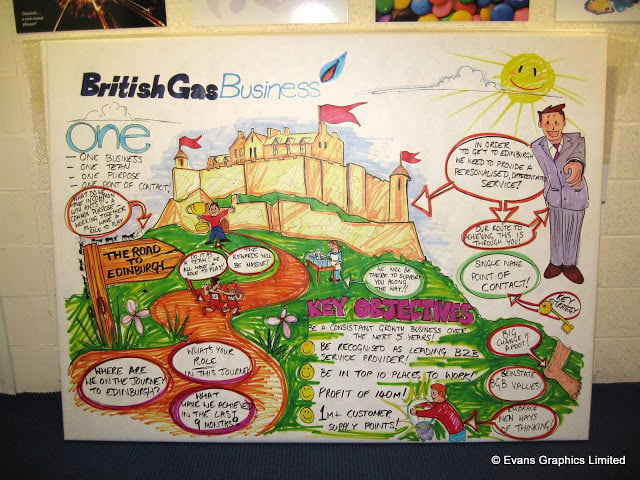Few materials combine traits typically associated with fabric, film and paper. That’s just one of the qualities that sets Tyvek apart and makes it so popular with designers and print providers alike.
A non-woven synthetic, this remarkable substrate marries tiny polymer fibres together through a combination of force and temperature. The result is one of the most versatile options on the market.
Created by DuPont, the chemical giant christened it with the same tag in 1965. A trade name only, DuPont and Tyvek are one of the same.
For decades it was considered difficult to print onto, a painfully slow process that resulted in an almighty clear up operation. Technology has now advanced to such an extent however that this is no longer the case. In fact, Tyvek could be the ideal solution for your next project, for reasons outlined below…
Benefits
Perhaps its most defining feature is the fact its weatherproof. Not only will Tyvek repel water and therefore protect design, it also stands up to acids, bases and salts.
Understandably then, it has become the go-to for applications intended to last the course. Tear resistant, Tyvek retains an improbable strength when exposed to the harshest elements. Simply put, it has few rivals when it comes to durability yet remains surprisingly lightweight – a positive in itself.
High quality print is realised when adopting Tyvek. Moreover, this creates a distinctive look that enhances even complex designs. Unlike many substrates meanwhile, it can be printed onto either side while there is no need for reinforcement.
As for print processes, while laser printing has proven historically challenging, Tyvek is suitable for everything from flexo, gravure, latex, screen print, letterpress, offset, UV inkjet and thermal transfer.
It’s not just the methods that are simplified either.
Thereafter Tyvek can be cut and folded with real ease and - depending on the final product - fixed, glued, laminated, sewn, stapled and more. This leads to its inclusion in a wide range of applications we’ll touch on shortly.
Finally, Tyvek is 100% recyclable, a major plus point given a clear and correct desire for more sustainable print practices.

Applications
So where exactly will you find Tyvek? Well, there’s a strong probability you’ve encountered it without even realising.
Next time you pass a building under construction take a closer look at the plastic sheet covering the structure. That’s made from DuPont.
In fact, this versatile material can be found in everything from posters to clothing. The Costa Rican government even took to printing bank notes this way in the 80s.
Here’s a comprehensive but by no means complete list of things printed using Tyvek…
- Banners
- Building Coverings
- Dresses
- Folio Bags
- Maps
- Medical Packaging (Tyvek is easily sterilised)
- Posters
- Racing Numbers
- Self-Adhesive Labels
- Supermarket Bags for Life
- Totes
- Wallets
- Wrist Bands
Evidently, Tyvek is a unique offering. Materials deployed for garments that aren’t actually fabric are few and far between…
Its printability means it can be used to create just about anything, though here at Evans Graphics we find it’s usually requested for outdoor posters or canvas style promotional banners.
This makes sizing important and Tyvek, conveniently, can be printed in a roll format up to 1300mm in width. The Evans team can also sheet the roll stock down initially if we’re required to print in flat sheet form.

Downsides
The strength, durability and versatility of Tyvek make it one of the most popular materials available to print onto. But does it have any drawbacks? A small number, but none that can’t be overcome.
We’ve already touched upon the fact DuPont is waterproof. A positive in many respects, this does complicate the use of water-based inks. These are absorbed by paper and as a result dry relatively quickly. Not so with Tyvek.
In fact, such inks can bead on its surface and take an age to dry. When they do there is a small chance of smearing, something that undermines the final product entirely.
We also pinpointed challenges with laser printing. This is a result of Tyvek struggling when exposed to extreme temperatures. Being a thermoplastic, it can occasionally revert to a semi liquid state if overheated. Laser printers, by their very nature, depend on heat.
An alternative to laser printing has been found in thermal transfers, however. This method sees a thermal print head transferring solid ink from a ribbon onto a material, thus creating a permanent print.
The upshot? A product that better reflects the original design and affords faster turnaround times.
Tyvek is quite simply a brilliant synthetic material with a host of utterly unique properties. It is the obvious choice for flexible outdoor display work in the first instance but so much more besides. Put it to the test and you won’t be disappointed.


